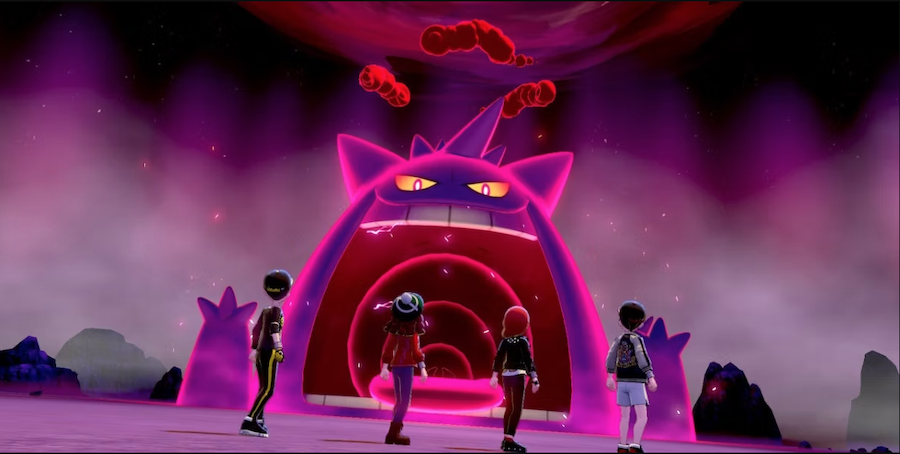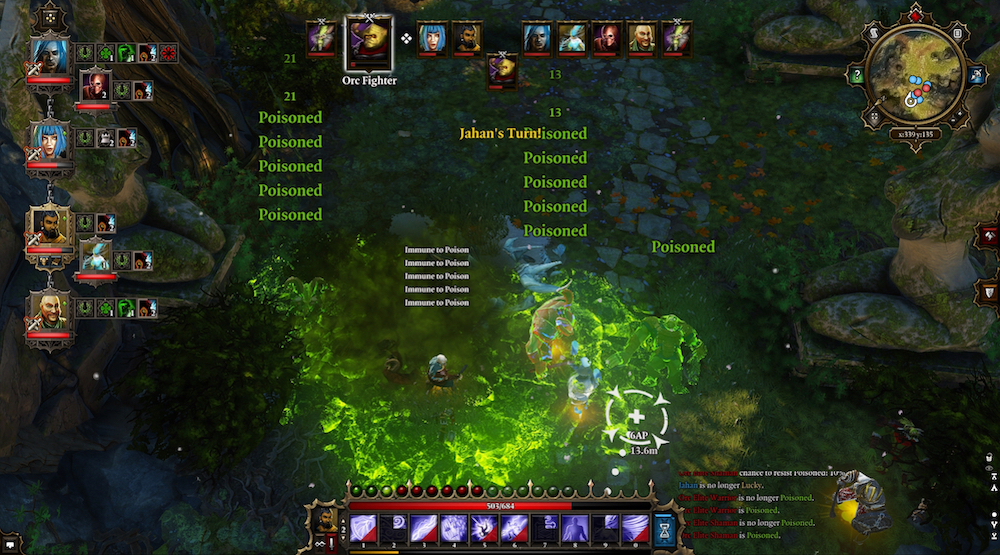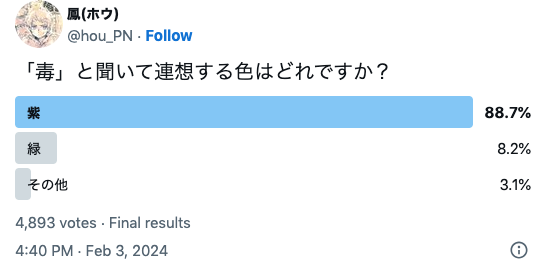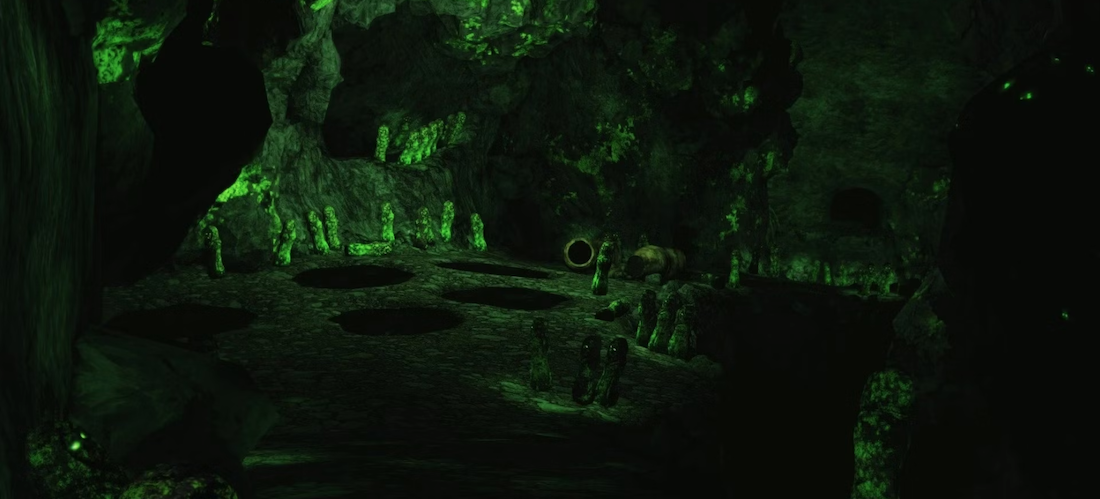Why do Japanese games like Pokémon represent poison using purple and not green?

In Japanese video games, toxic environments and poison status effects tend to be purple, whereas in western games, pools of poison and objects that are toxic to the player are most often green. This has not escaped the notice of some gamers, prompting numerous social media discussions on why these different color associations exist – including a thread on Japanese X this month.

The thread began with user @hou_PN’s report on a discussion between people from different countries about how poison is represented. They then hosted a survey on the color of poison. Although it’s not clear which country the respondents came from, as it was hosted on X in Japanese, it is likely that many of the 4893 people who answered are from Japan. It revealed that 88.7% respondents associated poison with the color purple.
American: I always think this when playing games like Pokémon, but in Japan, poison = purple doesn’t it?
French: That’s true! But for me, purple is an elegant color.
Japanese: So, which color seems like “poison” to you?
German: It’s green for me.
French: It’s green.
American: It’s green!
It’s strange that green has many associations with recovery in Japan.

Purple: 88.7%
Green: 8.2%
Other: 3.1%
This is not the first time these color differences have been commented upon. The purple vs green poison topic pops up on X in Japanese occasionally, with a previous thread from 2021 also getting many responses. A similar query popped up in English on Reddit about 6 months ago.
Pokémon in particular seems to be an example that has stuck in many players’ brains when talking about this topic. There are many poison-type Pokémon that are purple, including Ekans, Nidoran, Grimer and recent addition Pecharunt (who shows up with poisoned mochi in the Scarlet & Violet DLC). In the Dragon Quest series, deadly poison swamps are dark purple, and the Poison Breath attack is also this color. The Mario series also tends to go with purple poison- who can forget all those oozing purple swamps in Super Mario Odyssey?

However, there are plenty of exceptions in Japanese games where poison is colored green. For example, the poison status effect in the Final Fantasy series tends to be green, with some exceptions like Final Fantasy IX, where the poison spell and status are purple colored. Japanese games with settings inspired by overseas locations sometimes opt for green too; an example would be the eerie green glow of the Black Gulch in the medieval Europe-inspired Dark Souls 2. The Toxic Tower stage from Donkey Kong Country 2 features pools of green poison, but this is probably because this entry in the Japanese franchise was developed by British developer Rare.

So, what is the reason for these different color associations? The most common theory is that it relates to the history of poisonous substances in Japan and abroad. Wolfsbane, with its bluish-purple flowers was a commonly used source of poison in Japan. Green’s association with poison in the west is likely linked to the invention of highly toxic vivid green pigments like Paris Green and Scheele’s Green. Scheele’s Green (invented in 1775) and similar compound Paris Green (invented in 1814) became highly fashionable among the wealthy for their brilliant color, being used in paints, wallpapers and to dye clothes. However, exposure to these toxic arsenic pigments over time gradually caused serious health problems, such as cancer. Thus, vivid shades of green became strongly associated with poison.
It was also theorized that old imagery of witches cooking up poisons from green plants could also have influenced the “green equals poison” association in the West
There were also some other theories on the different color associations, including that it may be related to historical differences in food culture.
What color comes into your mind when you think of poison and what are your most memorable poison-related moments in gaming?





Interesting article. Some countries also use Purple to denote the highest danger or risk warning to the public with regard to earthquakes and extreme weather. Whilst other countries opt to use Red instead. There are many threads to be explored with such differences!